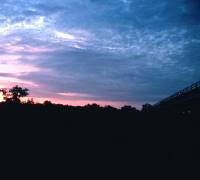|
||||||
|
In a 1937 article entitled “Milam County, The Future Field for Archeologists” published in a small journal called the Central Texas Archeologist, avocational archeologist J. B. White wrote of his expeditions through the area and reported on the sites he had discovered. He spoke of “numerous villages” and campsites along stream banks and wondered about the ancient peoples that “time had erased from the prairies.” His methods were unsophisticated: White was an artifact collector—on a very large scale—as were many of his era, yet he recognized the value of and need for archeological research in this significant region. Today, more than half a century later, few of the sites he discovered are known to archeologists, and even fewer have been professionally excavated. Many have been destroyed by the continuing development of rural and urban areas. Many others have been dug up by artifact collectors out of curiousity and sometimes just plain greed. Yet some sites in the area survive more or less intact and still have the potential to yield badly needed scientific data. We can only hope that concerned landowners will continue to protect some archeological sites for the future. The science of archeology continues to develop new and improved ways of excavating and analyzing prehistoric sites. Perhaps one day proper excavations will take place at a series of these surviving sites. Such work would fill in the many gaps in our understanding of the prehistory of the Little River region and provide greater insights into the connections between the Late Prehistoric hunter-gatherers of central Texas and the contemporary agricultural villagers who settled the the Pineywoods of east Texas. Some of the larger “Indian villages” noted by Mr. White almost certainly date to the same time period as the J. B. White site, and they must include the places where the people lived and visited when not at the J. B. White site. Excavations at these villages would provide information that could complete the picture of prehistoric life along the Little River that work at the J. B. White site has just barely scratched the surface of. Much remains to be discovered or rediscovered and thoughtfully brought to scientific and public attention. |
|
||||

